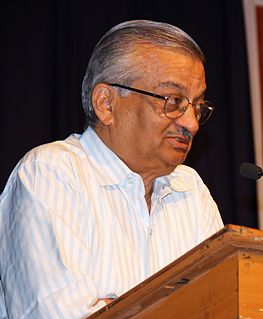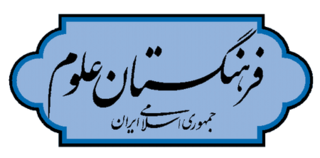Mast, MAST or MASt may refer to:

The Chinese Academy of Sciences, is a Chinese research institute. It has historical origins in the Academia Sinica during the Republican era and formerly also known by that name, is the national academy for the natural sciences of the People's Republic of China (PRC). Collectively known as the "Two Academies (两院)" along with the Chinese Academy of Engineering, it is an institution of China, functioning as the national scientific think tank and academic governing body, providing advisory and appraisal services on issues stemming from the national economy, social development, and science and technology progress. It is headquartered in Xicheng District, Beijing, with branch institutes all over mainland China. It has also created hundreds of commercial enterprises, Lenovo being one of the most famous.
A national academy is an organizational body, usually operating with state financial support and approval, that co-ordinates scholarly research activities and standards for academic disciplines, most frequently in the sciences but also the humanities. Typically the country's learned societies in individual disciplines will liaise with or be co-ordinated by the national academy. National academies play an important organizational role in academic exchanges and collaborations between countries.

The Huazhong University of Science and Technology is a public research university located in Guanshan Subdistrict, Hongshan District, Wuhan, Hubei province, China. As a national key university directly affiliated to the Ministry of Education of China, HUST is a Project 985 and Class A Double First Class University. HUST manages Wuhan National Laboratories for Opto-electronics (WNLO), which is one of the five national laboratories in China. HUST is also one of four Chinese universities eligible to run the national laboratory and the national major science and technology infrastructure. Huazhong University of Science and Technology was one of two Chinese universities awarded with the University Leadership Award by the Society of Manufacturing Engineers (SME), and elected as "China's Top Ten Research Institutions" by the academic journal Nature, called "The epitome of the higher education development of People's Republic of China".

Iran has a large network of private, public, and state affiliated universities offering degrees in higher education. State-run universities of Iran are under the direct supervision of Iran's Ministry of Science, Research and Technology and Ministry of Health and Medical Education. According to article 3 of the Constitution of the Islamic Republic of Iran, Iran guarantees "free education and physical training for everyone at all levels, and the facilitation and expansion of higher education."

Anil Kakodkar is an Indian nuclear physicist and mechanical engineer. He was the chairman of the Atomic Energy Commission of India and the Secretary to the Government of India, he was the Director of the Bhabha Atomic Research Centre, Trombay from 1996–2000. He was awarded the Padma Vibhushan, India's second highest civilian honour, on 26 January 2009.
The China Aerospace Science and Technology Corporation (CASC) is the main contractor for the Chinese space program. It is state-owned and has a number of subordinate entities which design, develop and manufacture a range of spacecraft, launch vehicles, strategic and tactical missile systems, and ground equipment. It was officially established in July 1999 as part of a Chinese government reform drive, having previously been one part of the former China Aerospace Corporation. Various incarnations of the program date back to 1956.

A vocational university, also known as university of applied sciences (UAS), polytechnic university, technological educational institute, applied technological university, or college of higher vocational studies, is an institution of higher education and sometimes research, which provides both tertiary and sometimes quaternary education and grants academic degrees at all levels in a variety of subjects.

A national university is generally a university created or managed by a government, but which may at the same time operate autonomously without direct control by the state.

After independence, Jawaharlal Nehru initiated reforms to promote higher education and science and technology in India. The Indian Institute of Technology (IIT)—conceived by a 22-member committee of scholars and entrepreneurs in order to promote technical education—was inaugurated on 18 August 1951 at Kharagpur in West Bengal by the minister of education Maulana Abul Kalam Azad. More IITs were soon opened in Bombay, Madras, Kanpur and Delhi as well in the late 1950s and early 1960s. Beginning in the 1960s, close ties with the Soviet Union enabled the Indian Space Research Organisation to rapidly develop the Indian space program and advance nuclear power in India even after the first nuclear test explosion by India on 18 May 1974 at Pokhran.
Science and technology in Asia is varied depending on the country and time. In the past, the Asian civilizations most notable for their contributions to science and technology were India, China and the West Asian civilizations. At present, probably the most notable country in Asia in terms of its technological and scientific achievement is Japan, which is particularly known for its electronics and automobile products. In recent years, China and India have also once again become major contributors to science and technology. Other countries are also notable in other scientific fields such as chemical and physical achievements.
University of Science and Technology or University for Science and Technology can refer to any of a large number of institutions of higher education, some of which have very similar names:
Institute of National Importance (INI) is a status that may be conferred on a premier public higher education institution in India by an act of Parliament of India, an institution which "serves as a pivotal player in developing highly skilled personnel within the specified region of the country/state". Institutes of National Importance receive special recognition and funding from the Government of India.

The Academy of Sciences of the Islamic Republic of Iran was established in 1988. It is one of the four academies of the Islamic Republic of Iran. The other three are: Iranian Academy of Medical Sciences, Iranian Academy of the Arts and Academy of Persian Language and Literature.

Han Qide is a Chinese physician and politician. Han is currently the chairman of the Jiusan Society and a member of the Communist Party of China. He was the Vice Chairman of the Standing Committee of the National People's Congress and is the Vice Chairperman of the National Committee of the Chinese People's Political Consultative Conference. He is also the President of the Chinese Society for Science and Technology.

Iran has made considerable advances in science and technology through education and training, despite international sanctions in almost all aspects of research during the past 30 years. Iran's university population swelled from 100,000 in 1979 to 2 million in 2006. In recent years, the growth in Iran's scientific output is reported to be the fastest in the world. Iran has made great strides in different sectors, including aerospace, nuclear science, medical development, as well as stem cell and cloning research.

Maharaj Kishan Bhan is an Indian pediatrician and clinical scientist. He has M.B.B.S. Degree (1969) from Armed Forces Medical College, Pune and M.D. Degree from Post Graduate Institute of Medical Education and Research, Chandigarh. He has carried out extensive post doctoral research at All India Institute of Medical Sciences in the areas of diarrheal diseases and child nutrition with an emphasis on public health issues. He is currently the president of the Jawaharlal Nehru Institute of Postgraduate Medical Education & Research (JIPMER).
Narinder Kumar Mehra is an Indian immunologist, head of the department of transplant immunology and immunogenetics of the SRL Limited, Gurgaon. He is a former dean of research and holds the ICMR Dr. C.G. Pandit National Chair at AIIMS. An elected fellow of the International Medical Sciences Academy, The World Academy of Sciences, Indian National Science Academy and National Academy of Sciences, India, Mehra is known for his research on histocompatibility and immunogenetics. The Council of Scientific and Industrial Research, the apex agency of the Government of India for scientific research, awarded him the Shanti Swarup Bhatnagar Prize for Science and Technology, one of the highest Indian science awards for his contributions to Medical Sciences in 1992. He received the Chevalier of the National Order of Merit from François Mitterrand in 2003.










